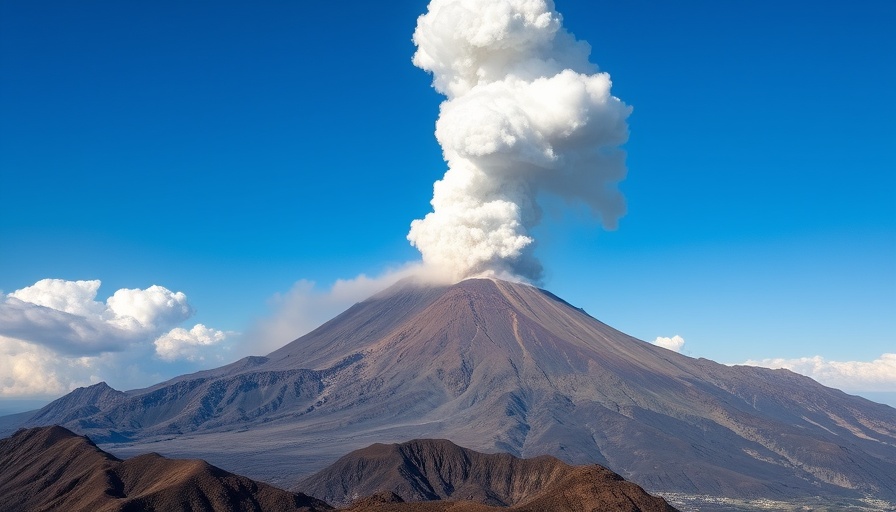
Mt. Etna: Sicily's Fiery Natural Wonder
On June 2, 2025, an incredible spectacle unfolded at Mount Etna, Europe's most active volcano, which erupted spectacularly, sending ash and smoke high into the sky. This latest eruption, signifying the 14th eruptive phase in recent months, has drawn attention to Etna's power and beauty. Despite this fiery display, officials assured that the activity posed no danger to nearby communities.
Nature's Dramatic Display
The eruption was primarily triggered by the collapse of part of the southeast crater, resulting in spectacular lava flows and extensive emissions of ash. This natural phenomenon captivated onlookers, drawing the eyes of many even from afar. While the ash cloud was substantial—rising several kilometers into the air—it remained a breathtaking sight, illustrating nature's raw force rather than an imminent threat to safety.
Safety Measures and Alerts
Following the eruption, officials raised alert levels, particularly at Catania airport, which is situated nearby. However, they reported no immediate disruptions to flights, showcasing effective emergency management and preparedness measures in addressing volcanic activities. This proactive response is critical given the region's potential susceptibility to disruptions caused by volcanic ash.
The Emotional Impact of Volcanic Eruptions
For many, watching a volcanic eruption can evoke a mix of awe and fear. Tourists and locals alike often find themselves captivated by the beauty of such displays, yet they may also be aware of the dangers that accompany them. The recent eruption heightens awareness not just about the volcano's magnificent power, but also its capacity to disrupt lives.
Scientific Insights into Volcanic Behavior
Italy’s INGV National Institute of Geophysics and Volcanology provides continuous monitoring of Etna’s activity, helping to understand patterns of eruptions and their consequences. They reported that although lava flows did not extend beyond their natural containment area during this eruption, keeping the summit closed to tourists was deemed necessary as a precaution. Hence, scientific vigilance plays a vital role in ensuring public safety.
Historical Context of Mount Etna’s Eruptions
Mount Etna has a rich history of eruptions spanning thousands of years, with records indicating eruptions dating back to the ancient Greeks. Each event contributes to the geological crafting of the landscape, and locals have long revered Etna as a symbol of both danger and beauty. These eruptions have not only shaped the land but have also woven themselves into the cultural and historical fabric of Sicily.
Cultural Significance of the Volcano
Etna is not just a geological marvel; it is deeply integrated into the Sicilian identity. Local folklore, cuisine, and festivals often celebrate the volcano, reflecting its dual nature as both a protector and a destroyer. The eruption reminds the populace of their connection to nature and the resilience required to live in harmony with such a powerful force.
Future Predictions and Environmental Awareness
As we look to the future, understanding the behavior of volcanoes like Etna is essential for regional safety and environmental awareness. Enhanced monitoring and predictive capabilities can play a significant role in mitigating risks associated with future eruptions. As volcanic activity becomes increasingly studied, it opens avenues for improving public safety measures.
Conclusion: Embrace the Natural Wonder
The recent eruption of Mount Etna serves as a reminder of nature's power and unpredictability. While the potential dangers cannot be undermined, the awe inspired by such events enriches our understanding of the planet and the need for vigilant observation and respect for natural phenomena.
 Add Row
Add Row  Add
Add 




 Add Row
Add Row  Add
Add 

Write A Comment